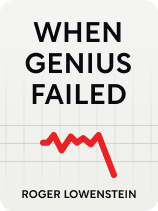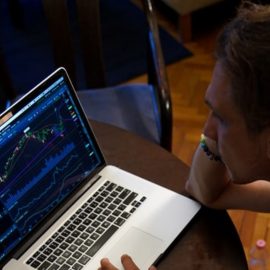

This article is an excerpt from the Shortform book guide to "When Genius Failed" by Roger Lowenstein. Shortform has the world's best summaries and analyses of books you should be reading.
Like this article? Sign up for a free trial here.
What’s arbitrage? How did John Meriwether’s arbitrage strategy earn Salomon Brothers a profit?
Arbitrage is where investors exploit small differences in price for similar assets in two or more markets. When John Meriwether learned this technique, he used it to his advantage, earning more money than ever.
Continue reading to learn more about how arbitrage works in the stock market.
The Power of Arbitrage
When Genius Failed by Roger Lowenstein writes that, at Salomon Brothers, Meriwether began his journey by learning the intricate art of arbitrage, a strategy that would become the linchpin of his success. Meriwether’s arbitrage strategy at Salomon Brothers enabled him to exploit price discrepancies, turning them into substantial profits.
At its core, notes Lowenstein, Meriwether’s strategy was rooted in the concept of convergence. He believed that differences in price between nearly identical financial securities would eventually equalize. By structuring his trades to bet on these convergences, he consistently emerged richer at Salomon Brothers, far more often than he faced losses.
| Pure Arbitrage vs. Relative Value Most arbitrage strategies can be split into two categories: pure arbitrage and relative value. Pure arbitrage involves capitalizing on observable price inefficiencies of identical products and is therefore considered riskless. For instance, imagine Product X is currently priced at $50, while a futures contract (an agreement to sell the product at a fixed price later) for Product X, expiring in six months, is valued at $55. In this simple example, by buying Product X and selling the futures contract, one could lock in a $5 gain without taking any risk. This profit occurs because, over time, the prices of the actual product and the futures contract are expected to converge or come closer together due to market forces. Therefore, the arbitrageur can profit from the price difference when the two prices ultimately meet or converge. In contrast, what Meriwether was doing at Salomon Brothers (and later at LTCM) was a relative value strategy. Like pure arbitrage, relative value strategies aim to profit from price differences. However, relative value strategies do carry some risk. For example, in a pairs trading strategy, you select two closely related stocks from the same sector, such as Company X and Company Y—buying shares of Company X while simultaneously shorting (betting against) an equivalent value of Company Y’s shares. If Company X’s stock rises relative to Company Y’s, you profit. If the inverse occurs, you incur losses. Because the two stocks can fluctuate independently, this strategy carries inherent risk, distinguishing it from pure arbitrage. |
Example: Arbitrage Strategy Across Two Stock Exchanges
Since it’s such a key concept to understanding the book, let’s take some time to illustrate arbitrage with an example.
Suppose Company A is listed on both the New York Stock Exchange (NYSE) and the London Stock Exchange (LSE). On the NYSE, Company A’s stock is trading at $100 per share. On the LSE, Company A’s stock is trading at £80 per share. Assume the exchange rate between the US Dollar (USD) and the British Pound (GBP) is 1 USD = 0.75 GBP. Given this exchange rate, Company A’s stock should theoretically be trading at approximately £133.33 on the LSE to be equivalent to its $100 price on the NYSE. Instead, an arbitrage opportunity exists because it’s underpriced on the LSE.
To execute the arbitrage trade, a trader buys Company A’s stock on the LSE for £80. She simultaneously sells an equivalent number of Company A’s shares on the NYSE for $100 each. So she buys 1,000 shares on the LSE for £80,000 (1,000 shares x £80/share). At the same time, she sells 1,000 shares on the NYSE for $100,000 (1,000 shares x $100/share).
Over time, the prices of the same asset on different exchanges will tend to converge due to arbitrageurs like the hypothetical trader taking advantage of the price difference: The price will rise on the LSE from their buying activity and fall on the NYSE from their selling activity.
As the prices on both exchanges converge, the arbitrage trader profits from the price difference. Suppose the price per share eventually converges to $90 on the NYSE and £90 on the LSE. She sells the 1,000 shares on the LSE for £90,000 (1,000 shares x £90/share) and buys back the 1,000 shares on the NYSE for $90,000 (1,000 shares x $90/share).
After the prices have converged, she’s made a profit because she initially bought on the LSE for a lower price and sold on the NYSE for a higher price. In this example, she has earned a profit of $10,000 (the difference between her initial $100,000 sale on the NYSE and her $90,000 repurchase).

———End of Preview———
Like what you just read? Read the rest of the world's best book summary and analysis of Roger Lowenstein's "When Genius Failed" at Shortform.
Here's what you'll find in our full When Genius Failed summary:
- The 1998 collapse of Long-Term Capital Management (LTCM)
- The history of LTCM, how it operated, and how it achieved success
- Insights to the LTCM story in light of subsequent events





